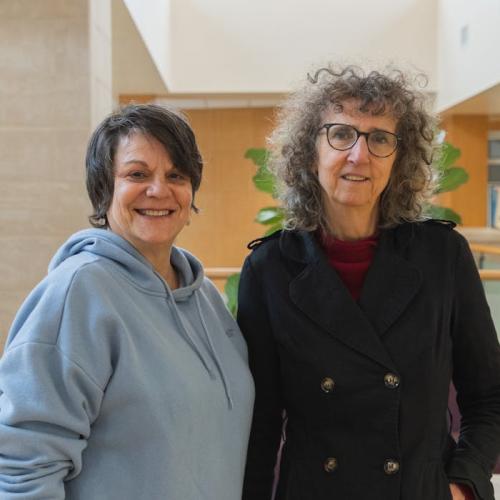Inspiring: Healing Our Earth News Stories
Below are key excerpts of inspiring news articles on healing our Earth from reliable news media sources. If any link fails to function, a paywall blocks full access, or the article is no longer available, try these digital tools.
For further exploration, delve into our Inspiration Center.
An amazing hydrogen-powered round-the-world ocean voyage has just gotten underway, with the US$5.25-million Energy Observer setting sail from Paris. The French vessel, which is set to make 101 stopovers in 50 countries across the globe during its epic 6-year undertaking, runs on wind and solar power, plus hydrogen generated from seawater. The trip, which will self-sufficiently circumnavigate the globe with zero greenhouse gas emissions, has been described as the 'Solar Impulse of the Seas', in reference to the pioneering solar-powered aircraft that flew around the world in 2016. The Energy Observer runs on solar power harnessed from extensive panelling ... in addition to two large wind turbines at the rear of the 30.5-metre (100-foot) long catamaran. When it's night time or when there's no wind to spin the turbines, the vessel relies on its chief innovation: an electrolysis system that extracts hydrogen from sea water and stores it in an onboard tank. While it all sounds very high tech, the Energy Observer ... is actually a 34-year-old former racing vessel [modified] to now serve as a model for emissions-free transport. That new mission is also why the vessel is expected to take some six years to complete its worldwide tour. Unlike previous renewable-powered sea voyages around the world, the Energy Observer's crew is taking their time ... hoping that each stopover in ports throughout 50 countries along the way will help demonstrate that there's a viable alternative to using environment-destroying fossil fuels.
Note: Explore a treasure trove of concise summaries of incredibly inspiring news articles which will inspire you to make a difference.
He has been beaten, threatened and imprisoned. But the former child soldier and winner of this year's Goldman Environmental Prize says he will not stop until those wanting to destroy the Democratic Republic of Congo's protected wildlife "are held responsible for their actions." "Even if I or others are not able to (make this happen)," says Rodrigue Mugaruka Katembo, "then the future generations will have this information and will do it." Katembo ... has been awarded the top environmental prize in recognition of the heroism he showed in preventing oil exploration inside Virunga - Africa's oldest national park. His dangerous undercover investigations exposed bribery and corruption among officials. The park is home to a quarter of the world's last remaining mountain gorillas, there are less than 900 left globally. Covering the size of a small country, Virunga is more than 3,000 square miles packed with volcanoes, lush forests and mountain glaciers that tear through the Democratic Republic of Congo, Uganda and Rwanda. As a park ranger, Katembo has one of the most dangerous jobs in the region. Amidst political instability, armed poachers and rebels - who have been warring in the park for the past 20 years - outnumber park rangers ten to one. Protecting Virunga hasn't been easy. In 2013, Katembo was arrested and held for 17 days [after attempting] to stop construction of an oil communication device within the park. Local chiefs have [also] offered him bribes, "to help them get oil exploration going in the park," he says.
Note: A Netflix documentary called "Virunga" follows Katembo, colleagues Andr Bauma, Emmanuel du Merode and French investigative journalist Mlanie Gouby, as they battle oil exploration and armed conflict in the park.
Theres a recycling revolution happening in Sweden. Less than one per cent of Sweden's household garbage ends up in landfills today. By Swedish law, producers are responsible for handling all costs related to collection and recycling or disposal of their products. If a beverage company sells bottles of pop at stores, the financial onus is on them to pay for bottle collection as well as related recycling or disposal costs. Rules introduced in the 1990s incentivized companies to take a more proactive, eco-conscious role about what products they take to market. It was also a clever way to alleviate taxpayers of full waste management costs. According to data collected from Swedish recycling company Returpack, Swedes collectively return 1.5 billion bottles and cans annually. What can't be reused or recycled usually heads to WTE incineration plants. WTE plants work by loading furnaces with garbage, burning it to generate steam which is used to spin generator turbines used to produce electricity. That electricity is then transferred to transmission lines and a grid distributes it across the country. In Helsingborg (population: 132,989), one plant produces enough power to satisfy 40 per cent of the citys heating needs. Across Sweden, power produced via WTE provides approximately 950,000 homes with heating and 260,000 with electricity. Recycling and incineration have evolved into efficient garbage-management processes to help the Scandinavian country dramatically cut down the amount of household waste that ends up in landfills.
Note: Explore a treasure trove of concise summaries of incredibly inspiring news articles which will inspire you to make a difference.
For nearly a week, two dozen organic farmers from the United States and Canada shared decades worth of stories, secrets and anxieties [at California's Esalen Institute]. During their meetings, some of the farmers worried that their children would not want to continue their businesses and that they might have to sell their homes and land to retire. [Conference organizer Michael] Ableman, the author of Fields of Plenty, is writing a book about the gathering. Deborah Garcia, the widow of Jerry Garcia of the Grateful Dead and a filmmaker whose previous films include The Future of Food and The Symphony of the Soil, is making a documentary. The grandfathers and grandmothers of organic farming should be joyous, but they are not. Some of todays organic farmers have thousands of acres of single crops, which are flown to supermarket shelves, where they are sold at lower prices than many small organic farmers can afford to sell their produce. Generally, the farmers at Esalen have less acreage and sell dozens or hundreds of varieties of fruits and vegetables at local farmers markets, to upscale restaurants and through so-called community-supported agriculture. C.S.A.s, as these arrangements are known, consist of consumers who pay before the harvest for weekly deliveries of seasonal fruits and vegetables. The sustainable agriculture these farmers practice goes beyond farming without synthetic fertilizer and pesticides. They adhere to a broader political and ecological ethos that includes attention to wildlife, soil, education and community. For most of them, the bottom line has never been their bottom line.
Note: Don't miss the eye-opening documentary "Future of Food" at this link. For a treasure trove of great news articles which will inspire you to make a difference, click here.
Protesters rallied in dozens of cities [on May 26] as part of a global protest against seed giant Monsanto and the genetically modified food it produces. Organizers said "March Against Monsanto" protests were held in 52 countries and 436 cities, including Los Angeles where demonstrators waved signs that read "Real Food 4 Real People" and "Label GMOs, It's Our Right to Know." The 'March Against Monsanto' movement began just a few months ago, when founder and organizer Tami Canal created a Facebook page on Feb. 28 calling for a rally against the company's practices. "If I had gotten 3,000 people to join me, I would have considered that a success," she said Saturday. Instead, she said an "incredible" number of people responded to her message and turned out to rally. "It was empowering and inspiring to see so many people, from different walks of life, put aside their differences and come together today," Canal said. The group plans to harness the success of the event to continue its anti-GMO cause. "We will continue until Monsanto complies with consumer demand. They are poisoning our children, poisoning our planet," she said. Protesters in Buenos Aires and other cities in Argentina, where Monsanto's genetically modified soy and grains now command nearly 100% of the market, ... carried signs saying "Monsanto-Get out of Latin America." In Portland, thousands of protesters took to Oregon streets. Police estimate about 6,000 protesters took part in Portland's peaceful march.
Note: For a powerful summary of the dangers to health and the environment from genetically modified foods, click here. For major media news articles revealing the risks and dangers of GMOs, click here. For a treasure trove of great news articles which will inspire you to make a difference, click here.
Important Note: Explore our full index to revealing excerpts of key major media news stories on several dozen engaging topics. And don't miss amazing excerpts from 20 of the most revealing news articles ever published.












































































